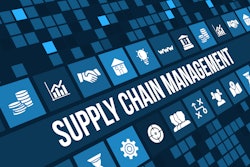
Pricing has always been a balancing act for supply chain and manufacturing leaders. It is a constant negotiation between cost inputs, customer demand, and market competition. In today’s volatile environment, that balancing act has unfortunately become much more complex.
Fluctuations in raw material costs, unpredictable demand swings, tariffs, and global supply disruptions can turn yesterday’s optimal price into today’s margin risk. The lag between recognizing a market change and updating prices can mean the difference between hitting profit targets and watching them slip away.
For decades, pricing in the supply chain space relied on manual processes, periodic reviews, and historical data. While those methods worked in stable markets, they are falling short in an era where conditions shift daily, sometimes hourly.
The good news is that AI can help shoulder the burden. By transforming raw supply chain data into predictive insights, AI-powered pricing can help supply chain organizations move from reactive, backward-looking strategies to predictive, real-time decision-making that adapts to live market dynamics.
From rearview to real-time
Reactive pricing is like driving by looking only in the rearview mirror. You see where you have been, but not what is ahead. Historically, companies have set prices based on past performance, adjusting quarterly or annually. But by the time these changes take effect, the market has likely already moved on. Prices become misaligned with current costs, competitive pressures, or customer expectations.
By integrating live data from across the supply chain, from supplier quotes and freight rates to customer order patterns and competitor behavior, AI models can forecast pricing pressures and opportunities before they materialize. Pricing teams can simulate scenarios, weigh trade-offs, and make changes immediately so prices match current market conditions, not last quarter’s numbers.
According to Bain & Company, organizations that rely on data-driven pricing guidance win more deals than they lose at a rate 12 percentage points higher than companies that do not. That kind of competitive edge sets leaders apart with forward-looking pricing strategies that adapt in real time.
Early detection of margin risks
Margin erosion often begins quietly. A spike in freight costs here or a dip in order volume there. By the time these shifts show up in monthly or quarterly reports, the damage is already done.
Take for example a regional building products distributor whose prices were misaligned across customers, channels, and markets. The company relied on a patchwork of ERPs, offered excessive exceptions, and lacked any real visibility into margin leakage. By moving to a consistent list-plus-discount model and providing guided deal pricing, it reduced price exceptions by nearly 70% and improved annual margins by almost 400 basis points, all without hurting win rates.
Another example is in working with private equity portfolio companies, where commercial margin expansion is often overlooked. Investment teams can uncover hidden EBITDA on Day 1 by identifying unstructured discounting and underpriced contracts. By implementing pass-through pricing and aligning sales incentives with profitability, they created scalable commercial discipline that not only improved near-term margins but also boosted exit valuations.
Those kinds of results are only possible when issues are spotted early and addressed with precision. AI makes this kind of early intervention possible by continuously monitoring data points such as commodity indexes, vendor lead times, inventory turnover, and demand forecasts. With enough lead time, leaders can make informed adjustments that preserve margins and strengthen their market position.
Strengthening cross-functional collaboration
Pricing in the supply chain does not happen in a vacuum. Changes affect sales forecasts, procurement plans, and logistics execution. Yet too often, these functions work in silos, which slows response times and creates misalignment.
AI-powered platforms create a shared source of truth. Sales, procurement, logistics, and pricing teams can see the same market signals, understand why a pricing decision is being made, and adjust their plans together.
According to McKinsey & Company, companies that successfully implement AI and advanced analytics in supply chain management have reduced logistics costs by up to 15%, improved inventory levels by 35%, and increased service levels by 65% compared to slower-moving peers. When those savings are visible across teams in real time, it becomes easier to coordinate strategic moves. For example, raising prices in one market while adjusting fulfillment routes to support demand in another.
AI’s role and its limits
AI brings scale, speed, and analytical horsepower to pricing decisions, but it is not a replacement for human expertise. Models rely on data, and markets can change for reasons no algorithm could predict, such as geopolitical events, new regulations, or sudden shifts in customer sentiment.
That is where human oversight remains essential. Experienced leaders provide the strategic judgment, relationship skills, and market awareness that AI cannot replicate. The best outcomes come from blending AI-driven insights with human intuition, so decisions are both data-informed and grounded in real-world context.
Building resilience through proactive pricing
In today’s unpredictable economy, the ability to adjust prices in near real-time is not just a competitive advantage. It is a resilience strategy. Supply chain organizations that embrace AI-powered optimization can:
- Anticipate margin risks before they escalate
- Respond to market opportunities faster than competitors
- Strengthen collaboration between pricing, sales, and operations
- Align prices with actual, not assumed, market conditions
That is the power of proactive pricing at work. And it is why AI belongs at the center of every modern supply chain strategy.


















